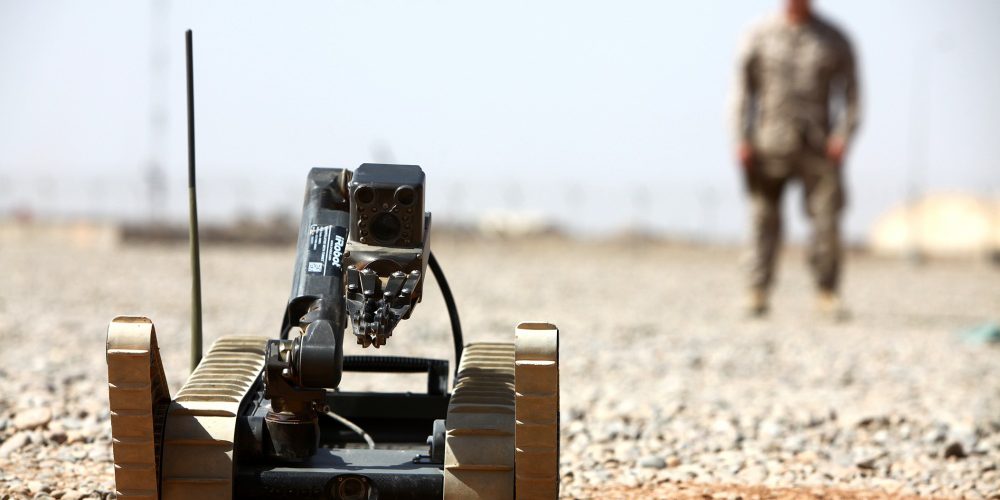Trust in autonomous systems to do what they are designed to do, and meant to do, is paramount before these systems can be confidently employed as an operational capability. In an era of Great Power Competition, where those who can field autonomous capabilities the fastest will have a distinct advantage, researchers at the Naval Postgraduate School (NPS) are exploring many of the fundamentals of autonomous systems, especially in the trust and confidence arena.
On the eve of the COVID-19 pandemic, NPS researchers conducted a novel experiment with an autonomous robot in a simulated environment – with real Marines – seeking to understand just how confident the Marines were in the robot to complete its tasks in a combat environment.
The NPS research team, comprised of Assistant Professor Mollie McGuire, Research Associate Christian Fitzpatrick, and NPS student Marine Corps Maj. Dan Yurkovich, traveled to Camp Lejeune, N.C., to research Yurkovich’s thesis, titled “Human-Machine Teaming,” using Camp Lejeune’s Combat Town Range and nearby Marines from the Advanced Infantry Training Battalion (AITB) as part of a testbed. This research was directly responsive to the Marine Corp’s 2018 Science and Technology Strategic Plan, which has a key objective to pursue advanced robotic systems to support ground maneuvers.
The experiment put the robot in an urban environment in the Combat Town Range, calling for the robot to conduct room-clearing, which is one of the most common of tasks in an urban warfare environment, but also one of the most dangerous.
For the experiment, the researchers employed the 310 Small Unmanned Ground Vehicle (SUGV), a man-portable robot intended for use by soldiers, combat engineers, and mobile explosive ordnance disposal (EOD) technicians to gather data for situational awareness in critical conditions. The Marines interfaced with the robot through a virtual gaming environment, created by NPS’ Modeling Virtual Environments and Simulations Institute, where they “trained” the robot in its specific room-clearing tasks and could then evaluate its effectiveness in accomplishing them from a “safe room” nearby.


